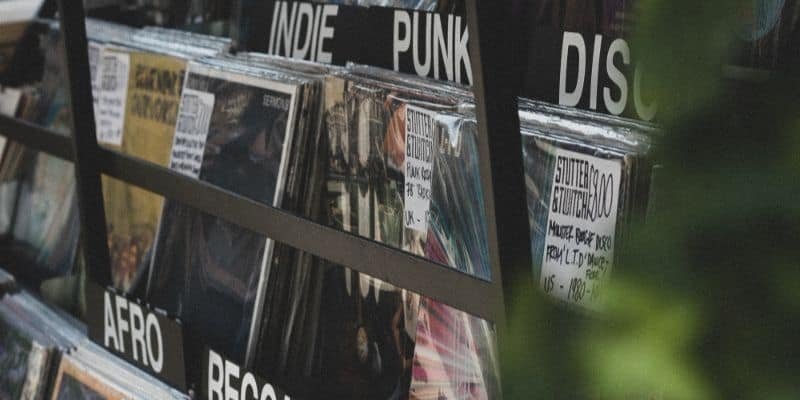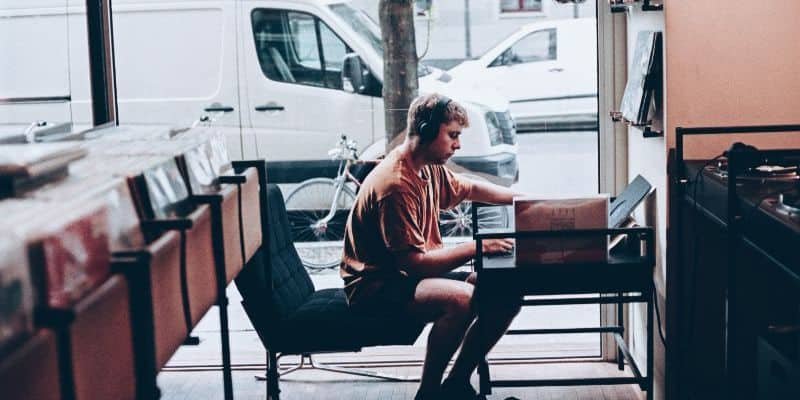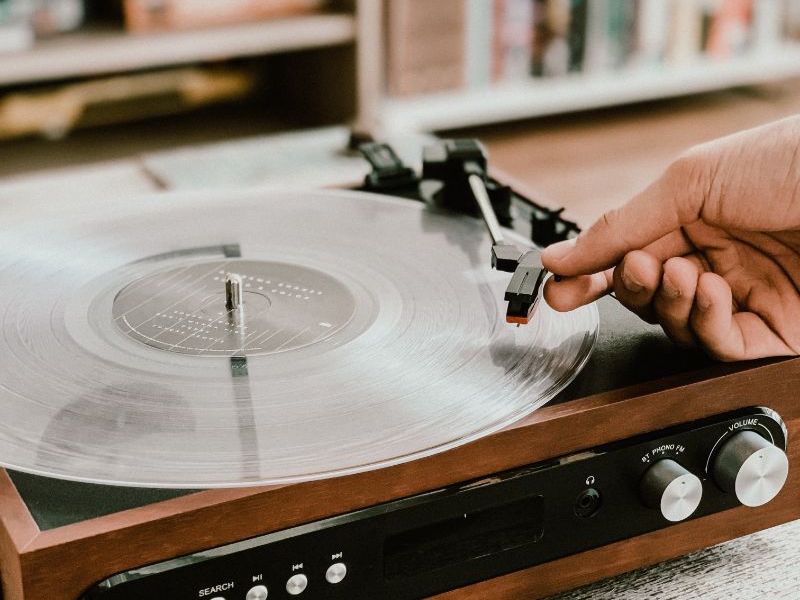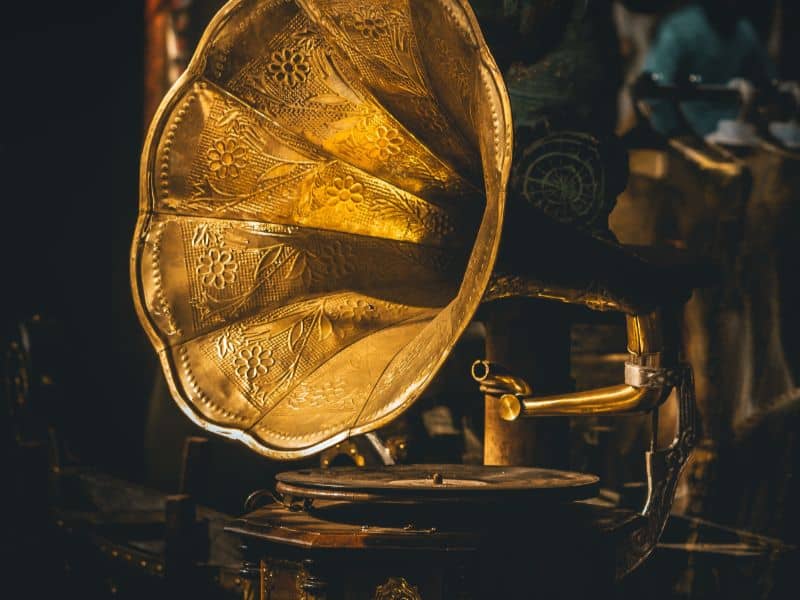Skip to the good bit
ToggleWhile collecting vinyl records has become a modern-day trend, with their authentic sound, long-term collectors know all the tips and tricks to get the most out of their purchase. Vinyl can make the perfect gift for a record vinyl lover. However, there’s a lot to look out for when vinyl is second-hand, and thanks to this guide, you’ll know exactly where to start.
Read on to explore nine clever ways to get top-quality second-hand vinyl every single time.
1. Know What You Want

When buying a new vinyl record, you have the freedom to explore all the shelves, picking whatever takes your fancy. When it comes to second-hand purchasing, however, it’s wise to go with a game plan.
As vinyl records used to be found in nearly every household, there’s a hell of a lot of them circling about. Purchasing second-hand without knowing what you want is like shooting in the dark – it’ll take forever and probably leave you empty-handed. You may need to determine what size you need your vinyl to be too.
Instead of flicking through stacks and stacks of vinyl, go to the areas of the shop that cater to what you want. We recommend having a rough idea of:
- Music genre
- Music era
- Certain artists
- Budget
Most record shops are categorised by genre or artist, so the above clarifications will make your browsing experience stress-free.
2. The Packaging Says A Lot About Condition
So, you’ve been raised to “never judge a book by its cover”, right? Scrap that. Yep, scrap everything you’ve learnt. You most certainly should judge a second-hand vinyl by its cover.
The quickest way to decide whether a second-hand vinyl is worth your time is by looking at its sleeve condition. We’re not saying that the slightest crease should put you off, but we are saying that there are certain flaws to look out for. To make this easy for you, we’ve split it into a traffic light system…
Green – Good To Purchase
- At first glance, it looks brand new
- The record is in the original shrinkwrap
- The record still has its inner sleeve
Amber – Okay To Purchase, Further Inspection Needed
- The sleeve has quite a few creases
- There are rips in the sleeve
- The corners of the sleeve are dog-eared (limp)
Red – Avoid, Not Worth Your Money
- Obvious signs of water damage
- You can see the vinyl through the rips
- The sleeve is badly battered and hanging off
- There is no inner sleeve
3. …And So Does The Record Surface
Next up, it’s time to inspect the record’s surface. Scratches on the record will affect the quality of sound and may end up damaging the stylus on your record player, check this guide out on how to care for your record player. Due to this, don’t bother purchasing a scratched record.
Dust, on the other hand, is not a reason to run away. Most second-hand records have been sitting around for quite some time, so a buildup of dust is normal. A quick wipe with an antistatic cloth should solve your problem here.
4. Don’t Overlook Warping

Following on from checking the surface of your record, don’t be afraid to get up close and personal. This will help you check for warping.
Hold the vinyl up to your eye-level to see if it’s warped (slightly bent). If the vinyl isn’t completely flat, it won’t sit perfectly on your record player. This will either make it unplayable or distort the sound. While you can fix warped records, it can be costly and timely.
5. Light Will Guide You
If you’re having trouble assessing the above three areas, move to an area with the brightest of lights. Most record shops will have the lighting under control, but don’t hesitate to move around to find the best spot possible.
Similarly to looking in a magnifying mirror, putting a vinyl record in bright light will highlight any flaws. Tilt the record around so that the light glares at all angles. Even the most minimal of scratches will be visible.
6. Pricing Can Be Competitive
If you’re buying second-hand vinyl because you love the in-shop experience, be speculative when it comes to pricing. It’s normal for pricing to be higher in shops, but finding the best deal is all part of the experience.
When purchasing in-store, refer to Discogs whenever unsure about a price. Discogs is a music database that shows the average cost of any record – it helps to see if you’re being ripped off or not. Don’t be alarmed by slight price increases, but always keep your budget in mind.
7. Online Gradings Aren’t Always Reliable
As you can probably tell, the internet is something that old-school vinyl collectors didn’t have. This cut out all worries surrounding authenticity, as they could view the record in-person before purchasing.
While the online world is valuable in many ways, it increases the risk of buying poor-quality records. Most websites selling second-hand vinyl will offer a grading system, but you should take this with a pinch of salt.
Grading systems can be very hit and miss. Some people will straight-up lie about a record’s condition, while others won’t be as observant as needed. With this in mind, only purchase a second-hand vinyl online if it has clear images that match up to the description.
Top Tip: If the product description is vague or images are blurry, either ask the seller for more information or search elsewhere. There’s probably a reason why you are being left in the dark!
8. No Compatibility, No Music
Although a rare occurrence, some second-hand records might not be compatible with your record player. This is particularly true if you’re buying super old records but have a super modern player.
Did You Know? Record players work to revolutions per minute (rpm). This refers to the number of turns it does in one minute. Records come in three speeds:
- 33 ⅓ rpm
- 45 rpm
- 78 rpm
The standard record speed is either 33 or 45 rpm, but it’s always best to check before buying. Some record players are only compatible with a certain speed.
9. Experts Are There To Help You

If you’re shopping in a proper record store, you can take comfort in knowing the staff members are there to help you.
Most – if not all – record store workers are passionate about music. They know their stuff and will be happy to share their knowledge with you. Take as much time as you need to ask them questions! They will even play the record for you if the store has a player available.
Vinyl Shopping Is An Experience, Take Your Time
Buying second-hand vinyl is not a process that you should rush. Instead, it is an experience that you should savour every minute of. By taking these nine tips into consideration, you’ll become the new owner of some top-quality vinyl!








